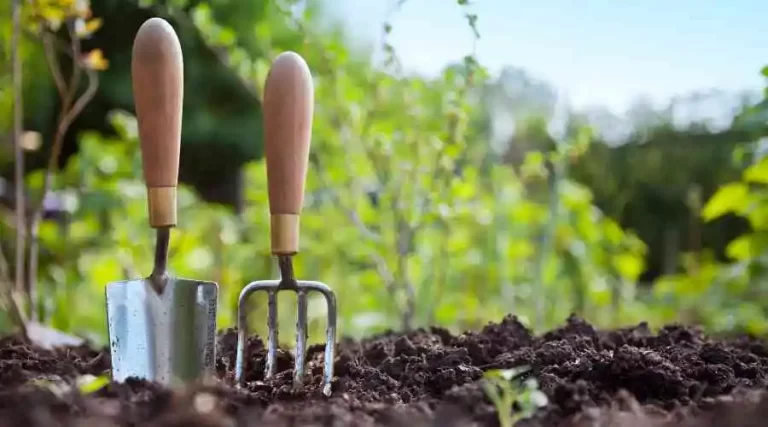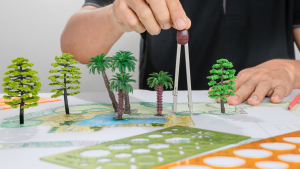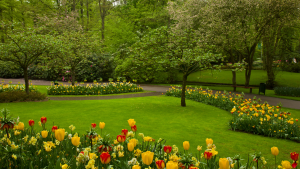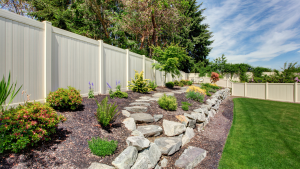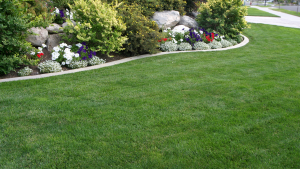Invading and taking over areas in the garden where desirable plants ought to be flourishing, weeds may be a major annoyance. They can be challenging to get rid of and are ugly. This can make it difficult to figure out how to get rid of weeds in a garden. The good news is that we have solutions for both stopping weeds in herb gardens and preventing them in produce gardens. In this post, we’ll go over how to spot common garden weeds and how to get rid of them quickly so they don’t come back.
How are weeds produced?
Weeds are opportunistic plants that seize every chance to expand. They are typically exceedingly resilient and tolerant of a variety of environmental factors, which accounts for why they are so challenging to eradicate. Weeds can spread quickly and easily because their root systems are frequently shallow. If not controlled, a single weed can quickly grow into a patch.
How to remove weeds
It’s time to learn how to get rid of weeds now that you can recognize them. Preventing weeds from ever growing is the greatest way to get rid of them. You can accomplish this by routinely mulching and keeping your garden beds clear of the trash. One of the best ways to keep weeds from taking over your garden is to use mulch. Mulch is a material that is applied to the soil to assist retain moisture, increase fertility, and inhibit weed growth. It is often organic. But, there are a few efficient weed killers that can help if you already have a marijuana issue. Although there are many different weed killers on the market, not all of them work against every kind of cannabis. You must pick a weed killer that is suitable for the kind of marijuana you’re seeking to eradicate.
How To Naturally Get Rid Of Weeds
There are a few solutions if you want to get rid of weeds in a more natural approach. One method is to manually pull the weeds. The most time-consuming but successful approach is this one. As you pull weeds, make sure to remove the complete root system; otherwise, they will simply reappear. Another choice is to cut the weeds at the base with a hoe or other instrument. Nevertheless, because the roots are still in the ground, this procedure is less efficient than manually picking weeds.
How to use vinegar to kill weeds
Vinegar can also be used to eliminate weeds. Natural weed control with vinegar is risk-free for both people and the environment. Simply combine equal parts vinegar and water in a spray bottle and mist the weeds with the solution to destroy them. The vinegar will eliminate the weeds without harming the other plants.
How to remove weeds from a lawn
Lawn weeds can be a serious issue. Using a weed killer made specifically for use on lawns is the best approach to eradicating weeds from lawns. Because some weed killers might harm your grass if they’re used improperly, it’s important to carefully follow the instructions on the product label.
How to remove weeds without harming the grass.
Consider installing a weed barrier in garden areas if you want to get rid of weeds without damaging the nearby grass. A substance (often cloth or plastic) is laid over the soil as a weed barrier to stop weeds from growing. Weed barriers can be made specifically for your garden and are offered in a range of sizes and materials.
Baton Rouge Mowing Companies: 4 Tips for Hiring the Best Lawn Mowing Service is a Related Topic.
Typical Garden Weeds and Their Control
Knowing how to recognize invasive plants and discovering the most effective strategies to eradicate them are two of the finest ways to get rid of weeds in a garden. These are a few of the more prevalent, difficult-to-kill garden weeds and the most effective ways to manage them:
A climbing or trailing vine with tiny white, pink, or purple flowers is known as bindweed. The form of the leaves varies. Mulching your garden is the most effective bindweed prevention measure. But, you can also get rid of this weed by chopping the vine at the plant’s base and removing as much of the root system as you can. Afterward, apply a broad herbicide to the area to kill both the roots and the above-ground growth.
A little, low-growing plant known as chickweed with opposite-oriented leaves. Five petals make up the little white blooms. Chickweed can be eliminated by hand-pulling young plants before they flower and set seeds or by applying a high-quality preemergence herbicide at the beginning of the growing season.
A low-growing, creeping plant with rounded, dark green leaves is called creeping Charlie, sometimes known as ground ivy. The petals of the little blue flowers are square-shaped. Mulch your garden areas at the start of each growing season to prevent the spread of creeping Charlie. If the weed is already established, you can also pluck the plants by hand or treat them with a herbicide.
Up to four feet tall, Dame’s Rocket has lance-shaped leaves and clusters of lavender flowers with four petals. Once established, it is a wildflower that can be quite challenging to eradicate. To stop weed growth, it is therefore important to mulch early in the growing season. The simplest technique to get rid of Dame’s rocket in your garden is to pick the young plants before they start to develop seed pods. Herbicides might be difficult to apply to this weed without endangering neighboring vegetation.
Up to four feet tall, lambs’ quarters have arrowhead-shaped leaves and tiny, green blooms. You can get rid of lambs’ quarters by mulching, hand-pulling the weeds, or applying a broad herbicide.
A grass-like plant known as a nutsedge has triangular stems, thin, grassy leaves, and yellow blooms. It frequently shows up in flowerbeds and lawns. Young plants can be easily pulled out by hand because the roots are shallow, which makes it one of the finest ways to eradicate this weed. However, to completely remove it, you might need to weed multiple times. In order to prevent harming the nearby grass or plants, you can also use a herbicide that is designated for use on nutsedge, but you must be careful to follow the guidelines.
Up to four feet tall, pigweed has lance-shaped leaves and tiny, green blooms. Mulching garden areas at the start of the growing season or using a preemergence herbicide are two of the finest strategies to get rid of pigweed. Pigweed can also be removed by hand pulling or spraying with a weed killer after the plants have taken root.
Low-growing purslane has spoon-shaped, succulent leaves and tiny yellow blooms. Using a preemergence herbicide and mulching at the beginning of the growing season are the best ways to control purslane. After that, remove any new plants that do emerge, and spot-treat the area with a general herbicide.
Up to four feet tall, thistles have small, purple blooms and spiky foliage. Mulching your planted areas is the greatest approach to prevent thistle because once it’s entrenched, it can be difficult to get rid of. If thistle is already present in your garden, you may either manually remove it (being sure to get the roots) or spray it with a herbicide designed to eradicate it.
Easily Eliminate Weeds Right Away
Baton Rogue Landscape Pros can assist if you’ve tried to keep weeds out of your lawn and garden but feel like it’s a lost battle. By identifying problem areas and providing a detailed strategy to keep your lawn and garden weed-free, our service professionals can help your garden and lawn get off to a fantastic start. Call us at (225) 800-4417 or submit an online estimate request to get started right now!

